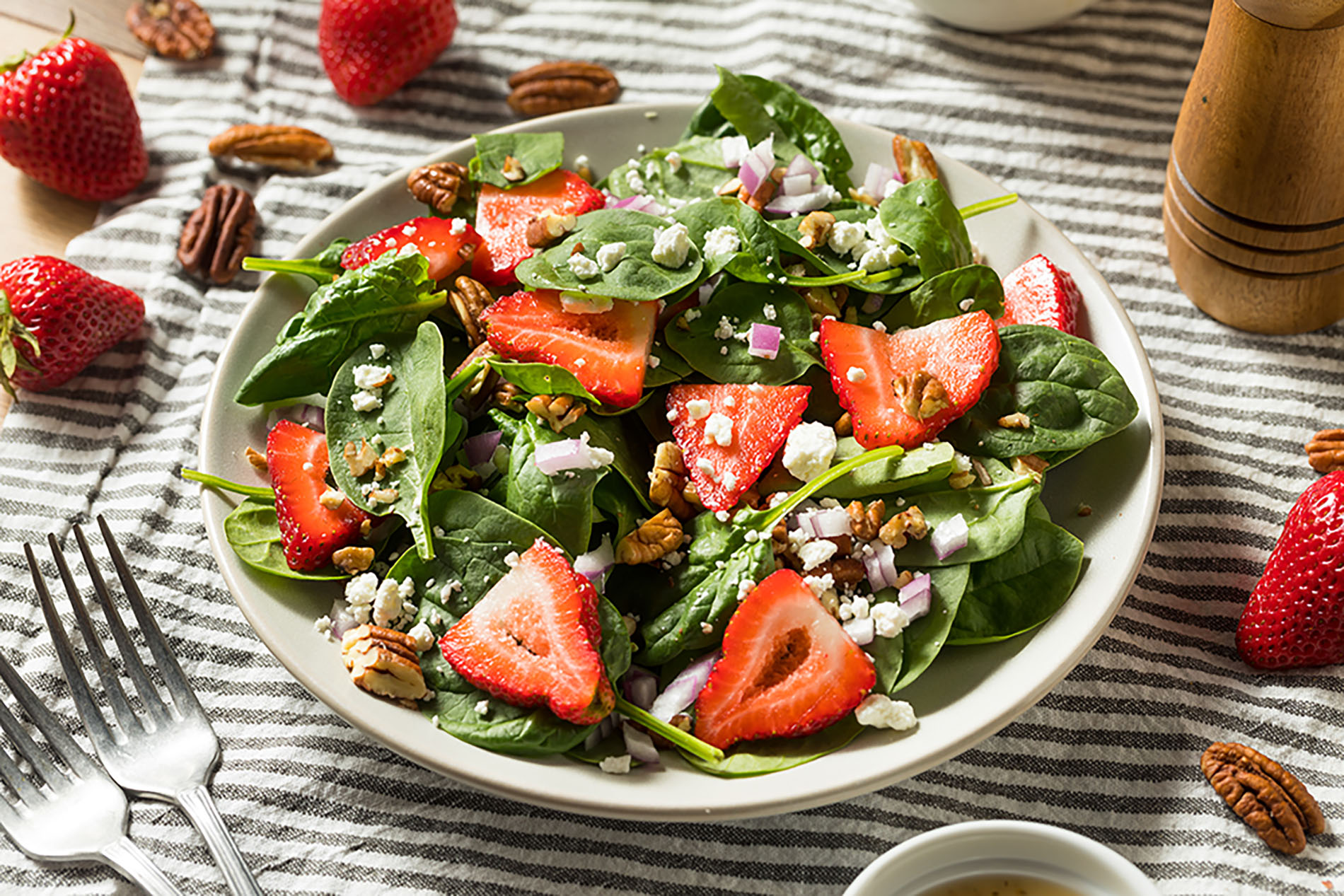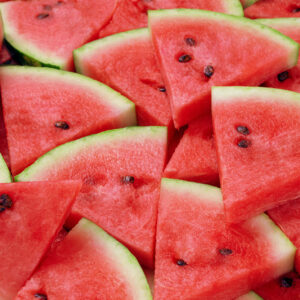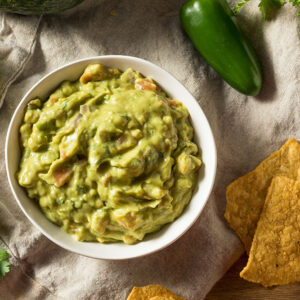I, like so many others around the world, love a great salad. They’re simple to mix together, they can be a healthy choice, and there are a wide variety of different types available. But, if you’re like me, you may have found yourself wondering where salads originated. Well, good news, I did the research, and now I will share it with you. Read below to learn more about the history of salad.

Written by: Amanda Csolak – Spice blogger for Spice Station Silverlake
I, like so many others around the world, love a great salad. They’re simple to mix together, they can be a healthy choice, and there are a wide variety of different types available. But, if you’re like me, you may have found yourself wondering where salads originated. Well, good news, I did the research, and now I will share it with you. Read below to learn more about the history of salad.
The First Salad
The first recordings of people enjoying salad date back to Ancient Roman times. The salads of that time were not much different than the modern-day garden salads of today. They consisted of fresh, edible herbs, lettuce, and raw vegetables, and the dressing of the time was a simple mixture of oil and salt.
The word salad stems from the Latin word “sal,” meaning “salt,” no doubt due to how salty they must have tasted back then.
Back in the 18th century, the first-ever chef’s salad was gaining popularity. It was common to use whatever ingredients you had in your kitchen to create them. The chef’s salad of the day was then called “salmagundi” and they typically included some kind of meat.
The Lettuce Side of Things
Not all salads are created equal. But garden salads always involve some type of lettuce. Whether it’s Iceberg, Arugula, or my personal favorite, Romaine. There are so many different kinds of lettuce!
Like the origin of the word salad, the name lettuce comes from the Latin language. The word is derived from the Latin word “Latucca.”
Ancient Greeks and Romans believed lettuce aided in a good night’s sleep, and it is believed that the original creators of the first garden salad, the Ancient Romans, are responsible for introducing lettuce to Britain. Later, lettuce was introduced to the North American continent by Christopher Columbus and his crew. After that, it didn’t take long for the cultivation of lettuce to begin in the new world.
The history of people eating lettuce, not in the form of a salad, dates back to Ancient Egypt. Around 4500 BC, paintings within Ancient Egyptian tombs were the first to depict lettuce. Lettuce was thought to be a powerful aphrodisiac, and it was considered sacred to worshippers of Min, the Ancient Egyptian god of fertility. Later, around 2,500 years ago, lettuce was enjoyed by Persian kings.
Salad Among Royalty
Royalty throughout history loved salad. Before salad became a common staple in many modern kitchens around the world, it was typically only enjoyed by those of royal descent as the ingredients involved usually were costly at the time.
In the late 1500’s Mary, Queen of Scots, enjoyed consuming boiled celery root with a blend of lettuce, chervil, truffles, and sliced hard-boiled eggs, all covered with a creamy mustard dressing. Sounds amazing right?
Salads were favored by European Monarchs. Chefs working in the Royal kitchens of the day would combine up to thirty-five different ingredients into one giant salad bowl. These salads even included edible flower petals. At the time, King Henry IV of England had a favorite salad which is really one of the first examples of a potato salad. It was a blend of new potatoes, which were boiled and diced, and was combined with sardines and a herb dressing. Of course, nowadays, traditional potato salad, made in many southern American kitchens, doesn’t involve fish of any kind, but rather crisp bacon is often used as the preferred salted meat included in the mix.
The Various Kinds of Salad, from Salty to Sweet
Today, salads can still be a beautiful blend of greens, but they also can incorporate a wide array of foods, including seafood, meat, pasta, cheese, veggies, and even fruit. Additionally, there are many varieties of dressing to choose from, including sweet dressings like raspberry balsamic vinaigrette, to tangy dressings such as my personal favorite, Italian dressing.
Lettuce start with the basics; a salad can be one of two types. The composed salad, such as an Italian antipasto plate, is a salad that involves the ingredients arranged on a serving dish. An antipasto plate is served as an appetizer in former Italian meals and consists of meats such as pepperoni and genoa salami, mozzarella cheese, and vegetables like cherry tomatoes and artichoke hearts.
If it’s not a composed salad, then it’s known as a tossed salad. It’s not hard to figure out why they’ve been given such a name. After all, the ingredients in any tossed salad are, well, tossed! Most salads consumed today are tossed salads.
Common Types of Tossed Salad
The people of Ancient Egypt likely never considered the impact salad would have on people of the world. They certainly didn’t think that there would come to be so many different types of salad. As I mentioned in the beginning, salad doesn’t always involve lettuce.
Let’s dive into the four different types of salad.
- Dinner Salads – In the United States, a dinner salad is served as the main course. Also known as an entree salad, dinner salads usually involve some small pieces of meat, such as chicken or steak, and often include an array of various kinds of cheese. Common examples of dinner salads include Caesar salad, cobb salad, and ever-popular chef’s salad.
- Bound Salad – By definition, a bound salad is assembled with a thick sauce, like mayonnaise. Single servings of a bound salad will retain its shape after being scooped onto a dinner plate. Some popular examples of bound salad include coleslaw, potato salad, tuna salad, chicken salad, and egg salad.
- Fruit Salad – This sweet variety of salad contains nothing but fresh fruit. The fruit is typically cut into bite-size pieces and is served without any dressing but may include natural fruit juice. Summer fruit salads can contain a variety of melons, citrus, kiwi, grapes, and berries and are commonly seen at many Summer picnics. Fruit cocktails combine cut fruit with fruit juice, and can be canned or made fresh, however, canned varieties often contain added sugars such as HFCS.
- Dessert Salad – Typically, a dessert salad is rather sweet and omits all leafy greens. Combining fruit with gelatin or whipped cream, dessert salads like jello salad and ambrosia sometimes can look less than appealing to those who’ve never tried them, and they are often overlooked at summer bbq’s and parties, so I don’t recommend making one for the company picnic, or summer bbq party, unless you know it’ll be a hit.
My Fondness For Good Salad
Growing up, I was never one to shy away from eating my serving of vegetables at dinnertime. Whether that was because I truly loved it then or because my parents wouldn’t let me leave the table til I at least tried whatever veggie was served that night, I honestly can’t recall. But I do know one thing, and that is, as an adult, I love veggies and, most especially, salads!
For me, nothing beats a delicious tossed green salad. It’s difficult to narrow down exactly which type of green salad in particular is my favorite, but I know I love a fresh garden salad made with vegetables like tomatoes and bell peppers, as much as I love summer salad with fresh sliced strawberries, or a mouthwatering chef’s salad with hard-boiled egg, grilled chicken breast, and cheese. Yum! Now I’m getting hungry.
As we’ve established in my previous blogs, like Watermelon: How Mom’s Favorite Fruit Became My Own, I love cooking. So naturally, I wanted to not only find a great salad recipe to include here for you, but I wanted it to showcase one of my absolute favorites, which is perfect for Summer.
The strawberry spinach salad blends savory spinach leaves with fresh, juicy strawberries, pecans, and feta cheese. Complimenting the sweetness of the strawberries, this salad is lightly tossed with a tangy balsamic poppy seed dressing. Whether it’s for a healthy lunch or your next event, you’ll want to make this salad, that is, if you want people to actually eat your salad.
Strawberry Spinach Summer Salad Recipe
Prep Time: 15 minutes
Total Time: 20 minutes
Yields: 6 servings
Recommended Equipment: For this recipe, you will need one non-slip cutting board, mixing bowls, a liquid measuring cup, a whisk, a set of salad tongs or wooden spoon, a rimmed baking sheet, and some parchment paper.
Ingredients:
For the Salad:
- ¾ cup raw pecans(see note for substitutions)
- ½ small red onion, very thinly sliced
- 10 oz. fresh baby spinach (see note for substitutions)
- 1-quart strawberries, hulled and quartered
- ¾ cup crumbled feta cheese (see note)
For the Poppy Seed Dressing:
- ¼ cup balsamic vinegar
- 3 tbsp. extra-virgin olive oil
- 1 ½ tbsp. blue poppy seeds
- 1 ½ tbsp. local or organic honey
- ½ tsp. Dijon mustard
- ½ tsp. kosher sea salt, I recommend Pacific Blue flake salt
- ⅛ tsp. Vietnamese black peppercorns, finely or coarsely ground
Directions:
- Toast the pecans: Preheat the oven to 350 degrees Fahrenheit. Spread the pecans in a single layer on an ungreased baking sheet lined with parchment paper. Bake for 8 to 10 minutes, until the pecans smell fragrant and the center of a pecan is tan when the pecan is broken in half. (Do not walk away from the oven in the last few minutes of cooking. This is when nuts love to burn.) Transfer to a cutting board and roughly chop.
- Place the sliced onions in a bowl and cover with cold water. Allow it to sit while you prepare the rest of the salad. Doing this allows the red onions to keep their flavor but removes the harsh and lingering aftertaste few enjoy.
- Prepare the dressing: In a small mixing bowl or large liquid measuring cup, whisk together all of the dressing ingredients—vinegar, oil, poppy seeds, honey, mustard, salt, and pepper—until well combined. (Alternatively, you can shake the ingredients together in a mason jar with a tight-fitting lid).
- Assemble the salad: Place the spinach in a great big serving bowl. Add the strawberries. Drain the red onion and add it as well. Drizzle about half of the dressing over the salad and toss to coat the leaves. Assess the amount of dressing. You want the spinach leaves to be nicely moistened but not swimming in dressing. Add a little more if needed to suit your preferences. Add the feta and pecans. Toss lightly to combine. Serve immediately, with extra dressing on the side as desired.
Chef’s Notes:
- Pre-roasted Pecans – You can purchase pre-roasted pecans to save time on doing it yourself. But truthfully, I don’t recommend taking this easy way out as the difference between freshly roasted pecans compared to store-bought simply is too big! But if you don’t have the time to wait, the bagged variety can work in a pinch. It just won’t make the best version of this salad, so don’t say I didn’t tell you so.
- Pecan Substitutions – It’s not the end of the world if you choose to omit pecans, but part of what makes this salad great is the crunch of the roasted nuts. So if pecans aren’t for you, try switching them out for chopped walnuts or slivered almonds. Whichever type of nut you choose for your strawberry spinach salad, make sure not to skip roasting them first – as it enhances their flavor and gives them the crunchy texture that helps make this salad one of my personal favorites.
- Nut Substitutions – Need to avoid nuts due to a nut allergy? Try adding toasted sunflower seeds to this recipe.
- Spinach substitutions – Another thing that makes this particular recipe pop is the amazing combination of spinach and fresh strawberries. But if you want to bring more of a peppery element to your salad, try adding a 50/50 blend of arugula and spinach.
- Strawberries – It’s important when shopping for strawberries for this recipe to buy the ripest and juiciest berries you can find. I recommend shopping at your local farmers market stand or picking them yourself. If you’re looking for other fruits to try in this salad I recommend using blueberries or raspberries. You can also incorporate mandarin oranges and dried cranberries if you prefer.
- Feta Cheese – Cheese adds a bit of creaminess to this summer salad, and feta, in all its crumbly, creamy glory, makes this salad truly satisfying. Some other wonderful cheeses that make great substitutes for feta in this recipe are goat cheese, gorgonzola, or even tangy blue cheese if you want to add even more flavor. So whether you choose to add goat, gorgonzola, feta, or blue cheese, be sure to buy a block, or log (goat cheese), of the cheese of your choice so you can crumble it yourself. Trust me on this. I know those tubs of cheese you find at the store are tempting, but I have a good reason for this recommendation. Those tubs of cheese tend to fail in the creamy department. To maintain freshness they are coated with a starchy powder to keep the pieces from sticking together. So if you are going to add cheese to your salad, it’s best to choose fresh so you can ensure that the cheese of your choice is lusciously creamy.
- Making ahead of time – This delicious salad can be made ahead of time up to 4 days in advance. If you need to make it before the day of the event, make sure not to add the salad dressing until it’s time to serve. Adding the dressing too early will cause the spinach and other ingredients to get soggy, ruining your strawberry spinach summer salad. The balsamic poppy-seed dressing can be refrigerated for up to five days in an airtight container, such as a mason jar. Make sure to shake well before dressing your salad, as the ingredients will settle while refrigerated.
Related Articles

Written by: Amanda Csolak – Spice blogger for Spice Station Silverlake
I, like so many others around the world, love a great salad. They’re simple to mix together, they can be a healthy choice, and there are a wide variety of different types available. But, if you’re like me, you may have found yourself wondering where salads originated. Well, good news, I did the research, and now I will share it with you. Read below to learn more about the history of salad.
The First Salad
The first recordings of people enjoying salad date back to Ancient Roman times. The salads of that time were not much different than the modern-day garden salads of today. They consisted of fresh, edible herbs, lettuce, and raw vegetables, and the dressing of the time was a simple mixture of oil and salt.
The word salad stems from the Latin word “sal,” meaning “salt,” no doubt due to how salty they must have tasted back then.
Back in the 18th century, the first-ever chef’s salad was gaining popularity. It was common to use whatever ingredients you had in your kitchen to create them. The chef’s salad of the day was then called “salmagundi” and they typically included some kind of meat.
The Lettuce Side of Things
Not all salads are created equal. But garden salads always involve some type of lettuce. Whether it’s Iceberg, Arugula, or my personal favorite, Romaine. There are so many different kinds of lettuce!
Like the origin of the word salad, the name lettuce comes from the Latin language. The word is derived from the Latin word “Latucca.”
Ancient Greeks and Romans believed lettuce aided in a good night’s sleep, and it is believed that the original creators of the first garden salad, the Ancient Romans, are responsible for introducing lettuce to Britain. Later, lettuce was introduced to the North American continent by Christopher Columbus and his crew. After that, it didn’t take long for the cultivation of lettuce to begin in the new world.
The history of people eating lettuce, not in the form of a salad, dates back to Ancient Egypt. Around 4500 BC, paintings within Ancient Egyptian tombs were the first to depict lettuce. Lettuce was thought to be a powerful aphrodisiac, and it was considered sacred to worshippers of Min, the Ancient Egyptian god of fertility. Later, around 2,500 years ago, lettuce was enjoyed by Persian kings.
Salad Among Royalty
Royalty throughout history loved salad. Before salad became a common staple in many modern kitchens around the world, it was typically only enjoyed by those of royal descent as the ingredients involved usually were costly at the time.
In the late 1500’s Mary, Queen of Scots, enjoyed consuming boiled celery root with a blend of lettuce, chervil, truffles, and sliced hard-boiled eggs, all covered with a creamy mustard dressing. Sounds amazing right?
Salads were favored by European Monarchs. Chefs working in the Royal kitchens of the day would combine up to thirty-five different ingredients into one giant salad bowl. These salads even included edible flower petals. At the time, King Henry IV of England had a favorite salad which is really one of the first examples of a potato salad. It was a blend of new potatoes, which were boiled and diced, and was combined with sardines and a herb dressing. Of course, nowadays, traditional potato salad, made in many southern American kitchens, doesn’t involve fish of any kind, but rather crisp bacon is often used as the preferred salted meat included in the mix.
The Various Kinds of Salad, from Salty to Sweet
Today, salads can still be a beautiful blend of greens, but they also can incorporate a wide array of foods, including seafood, meat, pasta, cheese, veggies, and even fruit. Additionally, there are many varieties of dressing to choose from, including sweet dressings like raspberry balsamic vinaigrette, to tangy dressings such as my personal favorite, Italian dressing.
Lettuce start with the basics; a salad can be one of two types. The composed salad, such as an Italian antipasto plate, is a salad that involves the ingredients arranged on a serving dish. An antipasto plate is served as an appetizer in former Italian meals and consists of meats such as pepperoni and genoa salami, mozzarella cheese, and vegetables like cherry tomatoes and artichoke hearts.
If it’s not a composed salad, then it’s known as a tossed salad. It’s not hard to figure out why they’ve been given such a name. After all, the ingredients in any tossed salad are, well, tossed! Most salads consumed today are tossed salads.
Common Types of Tossed Salad
The people of Ancient Egypt likely never considered the impact salad would have on people of the world. They certainly didn’t think that there would come to be so many different types of salad. As I mentioned in the beginning, salad doesn’t always involve lettuce.
Let’s dive into the four different types of salad.
- Dinner Salads – In the United States, a dinner salad is served as the main course. Also known as an entree salad, dinner salads usually involve some small pieces of meat, such as chicken or steak, and often include an array of various kinds of cheese. Common examples of dinner salads include Caesar salad, cobb salad, and ever-popular chef’s salad.
- Bound Salad – By definition, a bound salad is assembled with a thick sauce, like mayonnaise. Single servings of a bound salad will retain its shape after being scooped onto a dinner plate. Some popular examples of bound salad include coleslaw, potato salad, tuna salad, chicken salad, and egg salad.
- Fruit Salad – This sweet variety of salad contains nothing but fresh fruit. The fruit is typically cut into bite-size pieces and is served without any dressing but may include natural fruit juice. Summer fruit salads can contain a variety of melons, citrus, kiwi, grapes, and berries and are commonly seen at many Summer picnics. Fruit cocktails combine cut fruit with fruit juice, and can be canned or made fresh, however, canned varieties often contain added sugars such as HFCS.
- Dessert Salad – Typically, a dessert salad is rather sweet and omits all leafy greens. Combining fruit with gelatin or whipped cream, dessert salads like jello salad and ambrosia sometimes can look less than appealing to those who’ve never tried them, and they are often overlooked at summer bbq’s and parties, so I don’t recommend making one for the company picnic, or summer bbq party, unless you know it’ll be a hit.
My Fondness For Good Salad
Growing up, I was never one to shy away from eating my serving of vegetables at dinnertime. Whether that was because I truly loved it then or because my parents wouldn’t let me leave the table til I at least tried whatever veggie was served that night, I honestly can’t recall. But I do know one thing, and that is, as an adult, I love veggies and, most especially, salads!
For me, nothing beats a delicious tossed green salad. It’s difficult to narrow down exactly which type of green salad in particular is my favorite, but I know I love a fresh garden salad made with vegetables like tomatoes and bell peppers, as much as I love summer salad with fresh sliced strawberries, or a mouthwatering chef’s salad with hard-boiled egg, grilled chicken breast, and cheese. Yum! Now I’m getting hungry.
As we’ve established in my previous blogs, like Watermelon: How Mom’s Favorite Fruit Became My Own, I love cooking. So naturally, I wanted to not only find a great salad recipe to include here for you, but I wanted it to showcase one of my absolute favorites, which is perfect for Summer.
The strawberry spinach salad blends savory spinach leaves with fresh, juicy strawberries, pecans, and feta cheese. Complimenting the sweetness of the strawberries, this salad is lightly tossed with a tangy balsamic poppy seed dressing. Whether it’s for a healthy lunch or your next event, you’ll want to make this salad, that is, if you want people to actually eat your salad.
Strawberry Spinach Summer Salad Recipe
Prep Time: 15 minutes
Total Time: 20 minutes
Yields: 6 servings
Recommended Equipment: For this recipe, you will need one non-slip cutting board, mixing bowls, a liquid measuring cup, a whisk, a set of salad tongs or wooden spoon, a rimmed baking sheet, and some parchment paper.
Ingredients:
For the Salad:
- ¾ cup raw pecans(see note for substitutions)
- ½ small red onion, very thinly sliced
- 10 oz. fresh baby spinach (see note for substitutions)
- 1-quart strawberries, hulled and quartered
- ¾ cup crumbled feta cheese (see note)
For the Poppy Seed Dressing:
- ¼ cup balsamic vinegar
- 3 tbsp. extra-virgin olive oil
- 1 ½ tbsp. blue poppy seeds
- 1 ½ tbsp. local or organic honey
- ½ tsp. Dijon mustard
- ½ tsp. kosher sea salt, I recommend Pacific Blue flake salt
- ⅛ tsp. Vietnamese black peppercorns, finely or coarsely ground
Directions:
- Toast the pecans: Preheat the oven to 350 degrees Fahrenheit. Spread the pecans in a single layer on an ungreased baking sheet lined with parchment paper. Bake for 8 to 10 minutes, until the pecans smell fragrant and the center of a pecan is tan when the pecan is broken in half. (Do not walk away from the oven in the last few minutes of cooking. This is when nuts love to burn.) Transfer to a cutting board and roughly chop.
- Place the sliced onions in a bowl and cover with cold water. Allow it to sit while you prepare the rest of the salad. Doing this allows the red onions to keep their flavor but removes the harsh and lingering aftertaste few enjoy.
- Prepare the dressing: In a small mixing bowl or large liquid measuring cup, whisk together all of the dressing ingredients—vinegar, oil, poppy seeds, honey, mustard, salt, and pepper—until well combined. (Alternatively, you can shake the ingredients together in a mason jar with a tight-fitting lid).
- Assemble the salad: Place the spinach in a great big serving bowl. Add the strawberries. Drain the red onion and add it as well. Drizzle about half of the dressing over the salad and toss to coat the leaves. Assess the amount of dressing. You want the spinach leaves to be nicely moistened but not swimming in dressing. Add a little more if needed to suit your preferences. Add the feta and pecans. Toss lightly to combine. Serve immediately, with extra dressing on the side as desired.
Chef’s Notes:
- Pre-roasted Pecans – You can purchase pre-roasted pecans to save time on doing it yourself. But truthfully, I don’t recommend taking this easy way out as the difference between freshly roasted pecans compared to store-bought simply is too big! But if you don’t have the time to wait, the bagged variety can work in a pinch. It just won’t make the best version of this salad, so don’t say I didn’t tell you so.
- Pecan Substitutions – It’s not the end of the world if you choose to omit pecans, but part of what makes this salad great is the crunch of the roasted nuts. So if pecans aren’t for you, try switching them out for chopped walnuts or slivered almonds. Whichever type of nut you choose for your strawberry spinach salad, make sure not to skip roasting them first – as it enhances their flavor and gives them the crunchy texture that helps make this salad one of my personal favorites.
- Nut Substitutions – Need to avoid nuts due to a nut allergy? Try adding toasted sunflower seeds to this recipe.
- Spinach substitutions – Another thing that makes this particular recipe pop is the amazing combination of spinach and fresh strawberries. But if you want to bring more of a peppery element to your salad, try adding a 50/50 blend of arugula and spinach.
- Strawberries – It’s important when shopping for strawberries for this recipe to buy the ripest and juiciest berries you can find. I recommend shopping at your local farmers market stand or picking them yourself. If you’re looking for other fruits to try in this salad I recommend using blueberries or raspberries. You can also incorporate mandarin oranges and dried cranberries if you prefer.
- Feta Cheese – Cheese adds a bit of creaminess to this summer salad, and feta, in all its crumbly, creamy glory, makes this salad truly satisfying. Some other wonderful cheeses that make great substitutes for feta in this recipe are goat cheese, gorgonzola, or even tangy blue cheese if you want to add even more flavor. So whether you choose to add goat, gorgonzola, feta, or blue cheese, be sure to buy a block, or log (goat cheese), of the cheese of your choice so you can crumble it yourself. Trust me on this. I know those tubs of cheese you find at the store are tempting, but I have a good reason for this recommendation. Those tubs of cheese tend to fail in the creamy department. To maintain freshness they are coated with a starchy powder to keep the pieces from sticking together. So if you are going to add cheese to your salad, it’s best to choose fresh so you can ensure that the cheese of your choice is lusciously creamy.
- Making ahead of time – This delicious salad can be made ahead of time up to 4 days in advance. If you need to make it before the day of the event, make sure not to add the salad dressing until it’s time to serve. Adding the dressing too early will cause the spinach and other ingredients to get soggy, ruining your strawberry spinach summer salad. The balsamic poppy-seed dressing can be refrigerated for up to five days in an airtight container, such as a mason jar. Make sure to shake well before dressing your salad, as the ingredients will settle while refrigerated.










